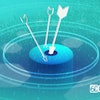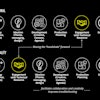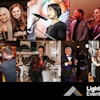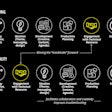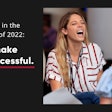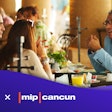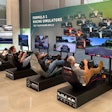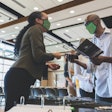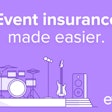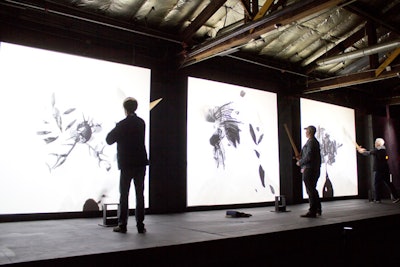
HBO’s SXSWesteros house promoted the cable network's hit series Game of Thrones and featured an interactive sword-playing game where attendees used Bluetooth-enabled swords to hit targets on a screen. Before the activity, participants posed for photos that were then incorporated into the game.
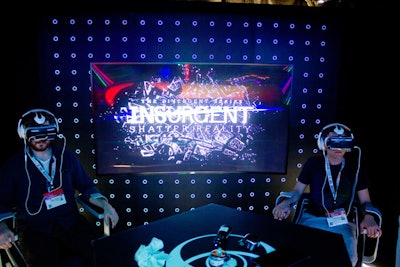
Samsung housed the “Insurgent Shatter Reality” virtual reality experience. Using Samsung VR technology, guests could visit the realm from the Divergent film series.

A large interactive table at the center FX’s Fearless Factory showcased the television channel's mobile app. Smaller tablets were built within side tables, too.
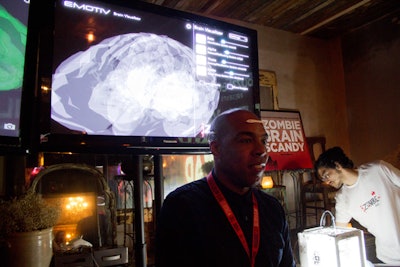
At the premiere party for the CW’s iZombie hosted by BuzzFeed, Emotiv headsets were provided to guests who were able to see their brain activities in response to eating different types of 3-D-printed candy made on the premises. Guests were allowed to email themselves a copy of their scans.

At the fifth annual Fast Company Grill, sponsor Toyota unveiled an Oculus Rift distracted driving simulator. Participants donned the device and sat in the driver’s seat of a Toyota and replicated a drive through an active and noisy street.
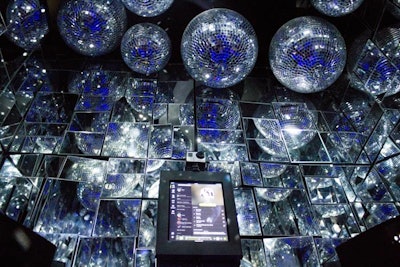
Users entered the Bose Southbooth, covered in mirrors and disco balls, and chose a single song to add to the official Spotify SXSW playlist.
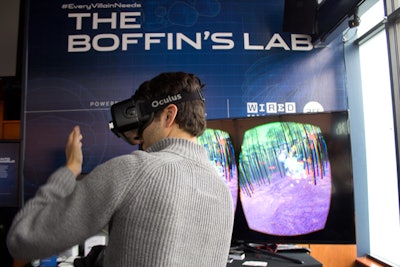
Boffin’s Lab featured a demonstration of Leap Motion headset technology, where guests were taken on a virtual reality through a forest.
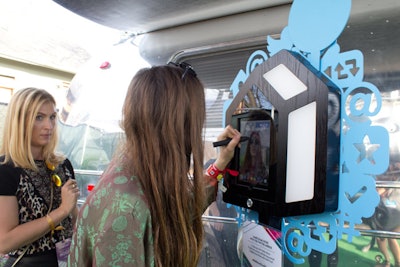
The department store featured a Twitter mirror in the artist area at its Make Some Noise house. Users were able to take photos of themselves, add additional content like text and drawings, and then tweet out the image through the brand’s Twitter account.
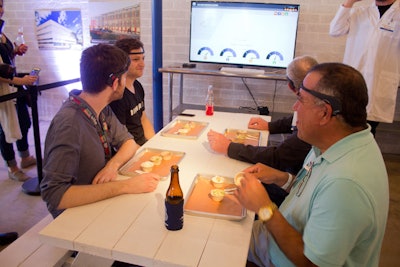
At General Electric's BBQ Research Center, participants put on color-coded brainwave scanners to see how their brains reacted while eating different barbecue cuts and sides.

Yahoo showcased the brand’s digital magazine content through projections on a cube set up near the entrance of the venue during the daytime. For evening events like the Community and Sin City Saints parties, images from the shows were shown.
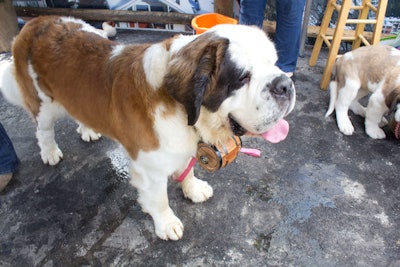
Mophie helped rescue attendees with dying phone batteries by sending out St. Bernards with a Mophie power reserve unit within a barrel attached to the dog’s collar. Those seeking help had to take a screenshot of their dying battery screen as well as their location, and tweet at the brand. The St. Bernards were housed at the MophieRescue Lodge, where the products were showcased. The organization also worked with the St. Bernard Rescue Foundation to raise awareness of adoptable St. Bernards across the country.
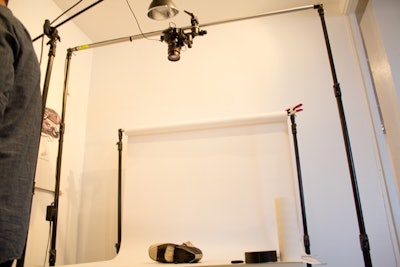
Extending its Made by You initiative, Converse photographed professional portaits of attendees’ sneakers in the style of the ad campaign. The images were then displayed on screens in the space. For those who weren’t wearing the brand, lucky guests were given free shoes at random.
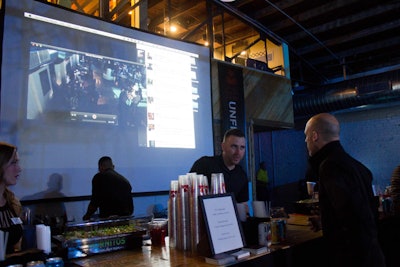
The premiere party for Unfriended, which was screened at SXSW, featured live streams of the current event throughout the space, alongside a Twitter feed of the party’s hashtag, mimicking the film’s plot centered on live video chats.
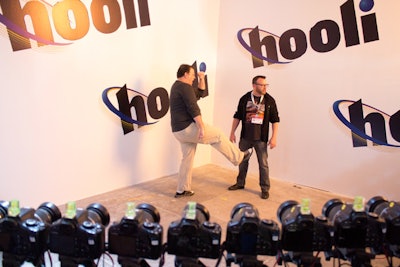
HBO’s Silicon Valley returned to the Mashable House with several activations, including Scheimpflüg’s Time Slice 360-degree photo booth, the images from which guests could email to themselves.
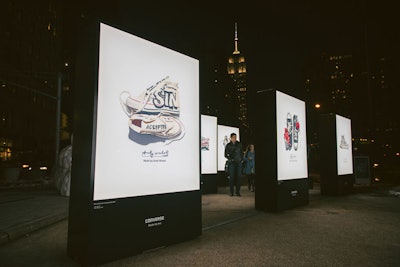
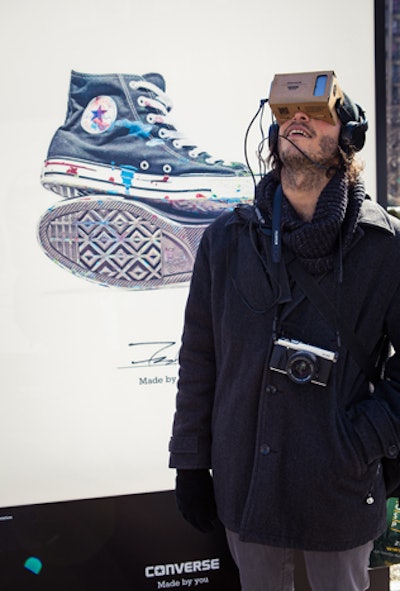

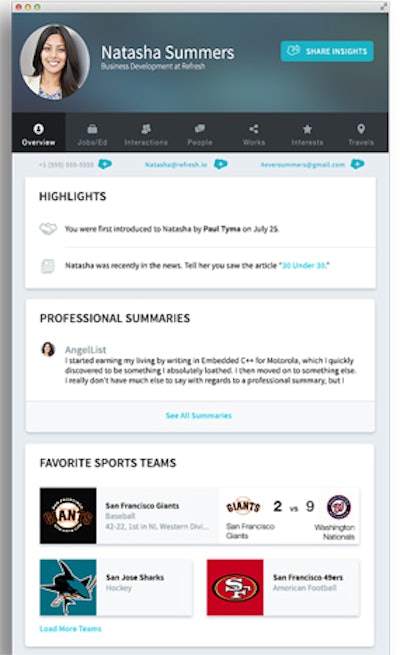
Planners interact with dozens of people—vendors, speakers, sponsors, and others—in the months leading up to an event. Refresh is a Web and mobile app that provides background information on people before a meeting to facilitate better engagement. Users link their calendars to the app and then the system searches public information from more than 100 sources around the Web, including Twitter, LinkedIn, Facebook, Yelp, and Instagram, about people they will be meeting. Users receive insights such as shared interests, work history, and recent blog posts. The system can also be used to store notes about people after a meeting.

Sponseasy allows planners to create professional sponsorship proposals in minutes. Organizers input information about the event, demographic information about the audience, and the various options for sponsorships. The look of the proposal can also be customized with pictures, colors, and effects. Planners distribute the proposal to potential sponsors by sharing a link. During the campaign, planners can track activity through the system’s online dashboard. In July the company announced a partnership with Eventbrite to allow them to import their event information. The system is currently free to use in beta.
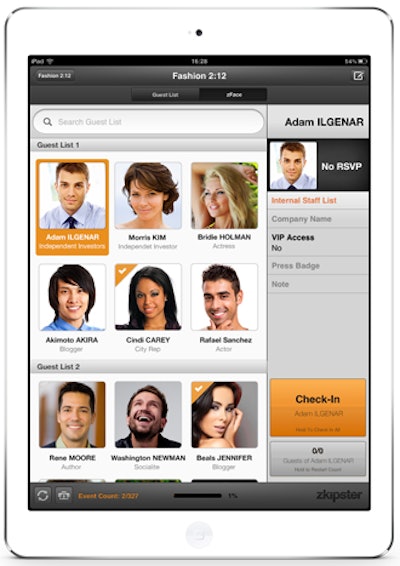
Zkipster is an app to manage check-in at non-ticketed events. In 2014 the company added several optional tools. Zface creates a photo-based guest list by searching the Internet for each guest name and pulling as many as 10 photo suggestions. Planners also can manually upload photos. The pictures are stored in a secure Zkipster account so they can be accessed for future events. Zsocial allows hosts to identify and connect with social media influencers at their event by integrating Twitter and Instagram handles into the guest list. As guests check in, the system can send them an automated welcome message that provides the event hashtag. After the event, Zsocial allows hosts to monitor and pull reports on social media interactions regarding their event. Zprint provides instant printing of name tags by connecting the app to a wireless printer.
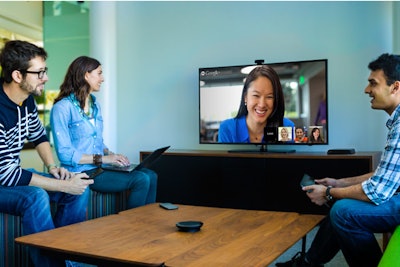
Google Chromebox for Meetings is a videoconferencing system based on Google Hangout technology. Hardware includes a Chromebox unit from either Asus, HP, or Dell, a high-definition camera, a combined microphone and speaker unit, and a remote control. As many as 15 participants can join the video meeting from other conference rooms or their laptops, tablets, or smartphones. One click of the remote starts the meeting without the need for access codes. The system is integrated with Google Apps, so invitations can be sent directly through Google Calendar. The system starts at $999.

Loopd is a system that uses Bluetooth low-energy beacons to provide a variety of location-tracking tools for planners and attendees. Beacons placed around the event communicate with chips the attendees wear on a lanyard. As guests visit exhibitor booths, attend education sessions, and meet other attendees, the system tracks those movements and saves the information. At any time, guests can log into the Loopd app to see a history of those interactions, as well as receive marketing materials from exhibitors they visited. Booth staff also receive traffic information and can follow up with attendees. For networking, users can tap their badges together to share their contact information; otherwise, the system will automatically collect data when two people are standing near each other for a predetermined amount of time. Planners receive real-time information about traffic flow and also data regarding retention, engagement, dwell time, and amount of connections made for attendees and exhibitors. The company plans to release an update in February.
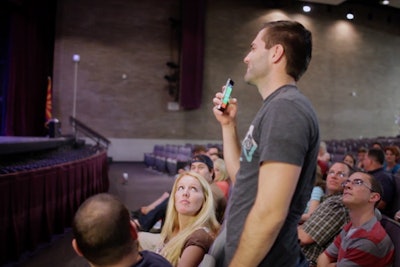
Crowd Mics turns guests’ smartphones and tablets into wireless microphones, so they can be heard over the sound system in a meeting room or auditorium. Guests download the Crowd Mics app and enter a code to join the event. When they want to ask a question or make a comment, they tap their phones, and the presenter will see a list of people requesting to speak in the order they came online. The presenter can enable an individual microphone, mute a microphone, or put the system in “open mic” mode so anyone can comment. Audience members can also submit text comments to the presenter through the Crowd Mics app, and the system offers polling functions.
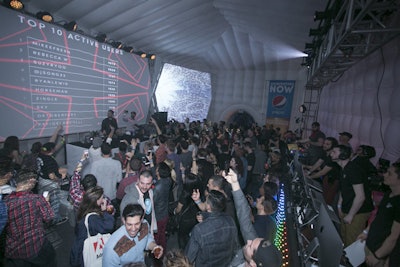
Lightwave has created sensor-equipped wristbands that measure the wearer’s biometric data, such as movement and body temperature. The technology debuted at a Pepsi-sponsored music event at South by Southwest in March. The data is transmitted wirelessly to the Lightwave system, which allows organizers to make adjustments in real-time. “For example, we thought the lighting and projections would be very engaging, but actually the environment was too bright. So when we noticed the accelerometer readings were not where we wanted them to be, we dimmed the lights and suddenly people started dancing more,” said Rana June, Lightwave founder and C.E.O. After an event, Lightwave provides data such as which moments got the most reaction from attendees or those that caused a lull in the room. Hosts also can choose to send guests their personal data to share on social networks.

Highfive is new video conferencing system from two former Google engineers. For $799, users get a sleek device that can sit on top of a television or mount to a wall and includes a video camera, microphone array, and HDMI and Ethernet connections to connect to the Highfive online system. Users initiate a video call through the system’s app or browser and send the URL to as many as 10 other participants. Using Bluetooth low energy, the system recognizes if participants are in a room with a Highfive device and then, by swiping across their smartphone screen, the video transfers to the television in the room—without cables. The system also automatically displays video of the person talking.
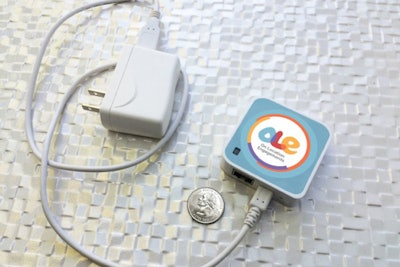
On Location Engagements is a location-based content delivery system for events. Beacons placed throughout a venue “wake up” smartphone screens when attendees are within a designated range, which can be anywhere from 5 to 30 feet. Planners determine what content is transmitted by each beacon, such as maps, videos, surveys, product information, or sponsor materials. Planners also can turn certain beacons on or off to guide an attendee through an event based on that person's job title, marketing objectives, or other goals. Attendees can create their own tour based on what interests them most by entering key words. When a tour is selected, only the beaconed zones associated with that tour would appear on the map. After the event, planners receive data such interactions per beacon, length of stay at each beacon, and traffic patterns at the venue.
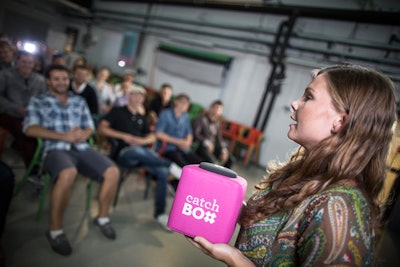
Catchbox is a wireless microphone to pass—or even throw—among speakers or audience members. The device consists of a microphone capsule secured with a magnet inside a soft, colorful cube. Catchbox communicates with an included receiver that can be connected to any sound system. To avoid unwanted noises, internal sensors mute the microphone when the cube is in motion. The company has two products: Catchbox 2.4 for groups of as many as 100 people no more than 100 feet apart and Cathbox Pro for an unlimited number of people within a range of 1,000 feet.
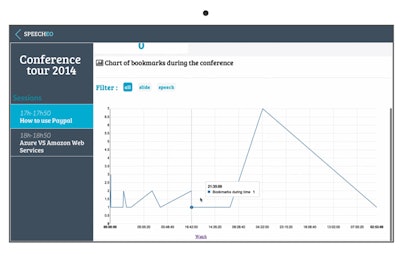
Speecheo is a new online tool for presentations designed to make it easy for audience members to take notes and also reveal to speakers and planners the most popular parts of their presentations. Attendees can view presentation slides and materials on their mobile devices and take notes alongside them. They can also capture audio and create bookmarks, so after the presentation they can review specific parts and share them on social media. Speakers and planners receive detailed analytics regarding which parts of the presentation were the most captured and shared. The system is currently in beta testing. The company expects to launch the public version in January.
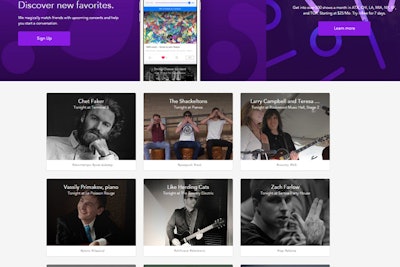
Jukely Unlimited describes itself as the "Netflix of concerts." For $25 per month, users can attend one free show per day in their area. The system, accessible on the Web and via a mobile app, currently includes listings in New York, Los Angeles, San Francisco, Austin, Texas, Miami, Chicago, Seattle, and Toronto, with plans for more cities in the coming months. Users can sync their music libraries with the app so it can recommend concerts based on individual tastes; over time it also recommends concerts similar to ones the user has attended. The app also shows friends who are going to a show and allows users to earn points toward free concert tickets by inviting friends to events.
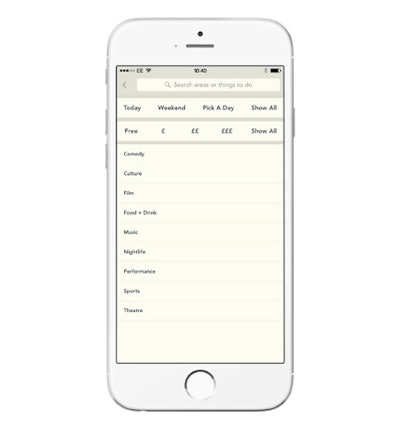
YPlan calls itself the “spontaneous going out app.” The app, currently offering listings in London, New York, and San Francisco, unveiled several new features in March. A curated list of recommended events is grouped in categories, for example date-night suggestions. Users can also search for specific venues or event types by location, category, or keyword. The app is also now integrated with maps, so users can see what’s happening in real time in specific locations, and new filter options allow users to refine selections by date and price.
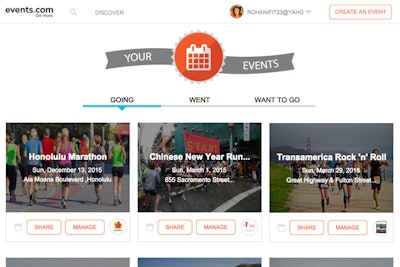
Events.com is a new cloud-based mobile app that launched in February. Users can search for events, purchase tickets, and share events on their social networks. The system also displays Twitter and Facebook posts about the event and a map of the event location.
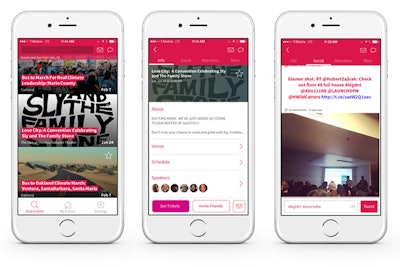
Eventjoy is an event management platform now owned by Ticketmaster that allows users to find events and buy tickets through the app. In January the app added new features, including the ability to chat with event organizers and view a live stream of social buzz around the event from Twitter and Instagram. Each listing in the app can include things such as maps, venue photos, and profiles of speakers, sponsors, and exhibitors. Users can also find out which of their friends are going and send personal invitations to those who are not.
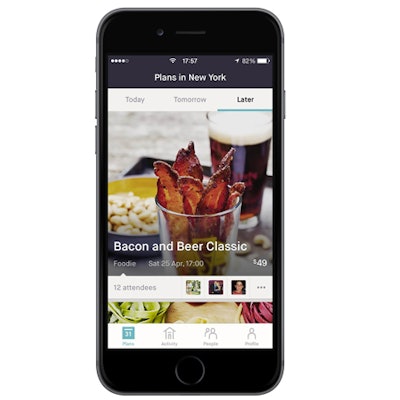
Fever launched in 2013 and is currently live in New York and Madrid, Valencia, and Barcelona in Spain, with London launching soon. The app creates a personalized list of things to do based on the user's interests and the friends and trendsetters they follow. Fever provides “tastemaker intel” based on partnerships with trendsetters in each city who allow the app to show where they are going and what they are doing. As users purchase tickets and attend events through the app, the system learns their preferences and customizes suggestions based on those past behaviors. As of February the app has more than one million users worldwide.

Vuevent uses tags such as art, live music, food, and fitness to categorize events. In the coming weeks the system will add deeper levels of filtering, for example specific types of music. Each suggested event also shows other similar events. Users can add events to their calendar, share events with friends, and favorite an event, which saves it to their profile. The app currently displays events in Denver and Boulder, Colorado, and in Austin, Texas, and the company plans to expand to more cities.
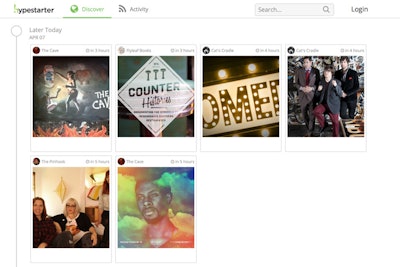
Hypestarter currently lists events in Raleigh, Durham, and Chapel Hill, North Carolina, with plans to add Atlanta, Boston, Chicago, Los Angeles, and several other cities later this year. The free app includes details from online event postings such as live music, festivals, 5K races, comedy events, sporting events, art shows, author events, and speaker series. Users can filter events based on those categories or calendars of specific venues and organizations, or by following what their friends are doing. Each listing includes social sharing tools, and hosts have the ability to add a link to online ticketing.
